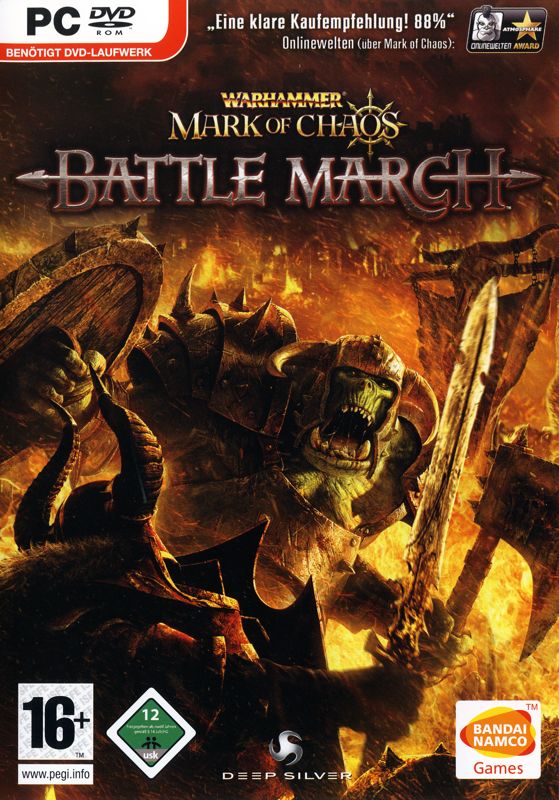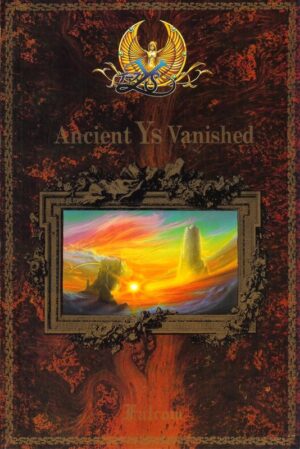Retro Replay Review
Gameplay
Warhammer: Mark of Chaos – Battle March builds upon the solid tactical foundation of the base game by introducing two entirely new playable armies: the sinister Dark Elves and the boisterous Orcs & Goblins. These factions bring unique units, abilities, and playstyles that diversify every battlefield. The Dark Elves rely on high-precision ranged attacks, lethal magic, and elite troops, whereas the Orcs & Goblins overwhelm opponents with numerical superiority and brute force. Learning how to leverage these contrasting strengths keeps each engagement fresh and strategic.
(HEY YOU!! We hope you enjoy! We try not to run ads. So basically, this is a very expensive hobby running this site. Please consider joining us for updates, forums, and more. Network w/ us to make some cash or friends while retro gaming, and you can win some free retro games for posting. Okay, carry on 👍)
The single-player campaign offers three distinct story arcs—commanding the Empire, the Orcs & Goblins, and the ruthless Legions of Chaos. Each campaign not only presents new mission objectives but also shifts the tactical demands placed on the player. As the Empire, you’ll balance heavy infantry formations and artillery barrages; as the greenskins, you’ll rely on ambushes and swarming tactics; and as Chaos, you’ll summon daemonic reinforcements and unleash powerful spells. This variety encourages multiple playthroughs to master the nuances of each race.
Where Battle March truly shines is its expanded multiplayer mode, “World Domination.” Here, the Old World is divided into dozens of territories, and players vie for global supremacy in an ongoing, hosted campaign. Each victory in a territory grants strategic bonuses—higher gold production, morale boosts, or unique buffs—and every battle unfolds as a traditional skirmish with tailored win conditions. The persistent multiplayer layer adds depth and longevity, making every match feel meaningful in the broader struggle for dominance.
Graphics
The graphical improvements in Battle March are subtle yet impactful. Unit models for the Dark Elves and Orcs & Goblins are highly detailed, showcasing distinct armor designs, weapon textures, and animations that emphasize each race’s identity. Dark Elves move with a cold precision and fluidity, while Orc & Goblin formations lumber and brawl in a fashion that feels true to their lore. These visual cues not only enhance immersion but also help players instantly recognize unit types on the battlefield.
Battlefields are richly rendered, ranging from dank swamps and icy plains to fortified cities and ruined keeps. Environmental details—such as smoke plumes, dynamic lighting, and weather effects—add atmosphere to skirmishes. Shadows lengthen at dusk, and fog can obscure lines of sight, reinforcing the tactical need for reconnaissance and positioning. While not a dramatic leap beyond its predecessor, Battle March’s art direction refines and polishes the visual experience.
Spell and ability effects have received particular attention. Dark Elf sorcery crackles with violet energy, lightning arcs in intricate patterns, and fireballs leave soot trails on impact. Orc cheers, goblin shrieks, and the growl of Chaos daemons are paired with particle effects that punctuate each clash. These audiovisual flourishes may not revolutionize real-time tactics, but they elevate the overall presentation and make every spell cast and charge ordered feel impactful.
Story
Battle March weaves new narrative threads into the existing Warhammer tapestry by focusing on the incursions of Dark Elves and Orc & Goblin hordes. The Druchii, ruled by the Witch King, emerge from the perilous sea voyage to reclaim Ulthuan, while the greenskins launch a chaotic “Waagh!-Offensive” across the Old World. These dual invasions enrich the ongoing conflict and provide clear motivations for each campaign’s objectives.
Each faction’s campaign is bolstered by compelling lore-driven cutscenes and in-battle dialogue, revealing the personalities and ambitions behind the legions. Empire generals debate strategy and faith; Chaos warlords exult in destruction; Dark Elves whisper dark malice; and greenskins bellow crude boasts. Although the narrative structure follows a familiar RTS formula—mission briefings, climactic battles, and plot twists—the voice acting and script capture the grimdark humor and brutality of the Warhammer universe.
The story culminates in high-stakes showdowns that test your mastery of each army’s mechanics. Victory or defeat in key engagements can change the balance of power, reflecting the chaotic nature of Warhammer’s lore. While not a sprawling RPG epic, Battle March’s tale provides enough context to engage fans and newcomers alike, ensuring each race’s motivations resonate throughout the campaign.
Overall Experience
Warhammer: Mark of Chaos – Battle March successfully expands its parent game by offering fresh content and deepening the strategic options available to players. The addition of two new races adds hours of replayability, and the varied single-player campaigns cater to different tactical preferences. Whether you favor disciplined formations, wild charges, or dark sorcery, Battle March has a campaign tailored to your style.
The “World Domination” multiplayer mode stands out as a highlight, delivering an ongoing, community-driven conflict that encourages cooperation and rivalry. The persistent map, developer-hosted servers, and territory bonuses keep the stakes high and the competition engaging. For those seeking multiplayer longevity beyond standard skirmishes, this mode offers a compelling long-term goal.
Battle March doesn’t revolutionize the genre, but it does refine and build upon a solid core. The polished graphics, diverse unit rosters, and immersive lore make it a worthy purchase for fans of Warhammer, real-time tactics, or anyone looking for a robust RTS experience. Its blend of single-player depth and multiplayer scope ensures that the chaos of war remains fresh long after the credits roll.
 Retro Replay Retro Replay gaming reviews, news, emulation, geek stuff and more!
Retro Replay Retro Replay gaming reviews, news, emulation, geek stuff and more!




Reviews
There are no reviews yet.